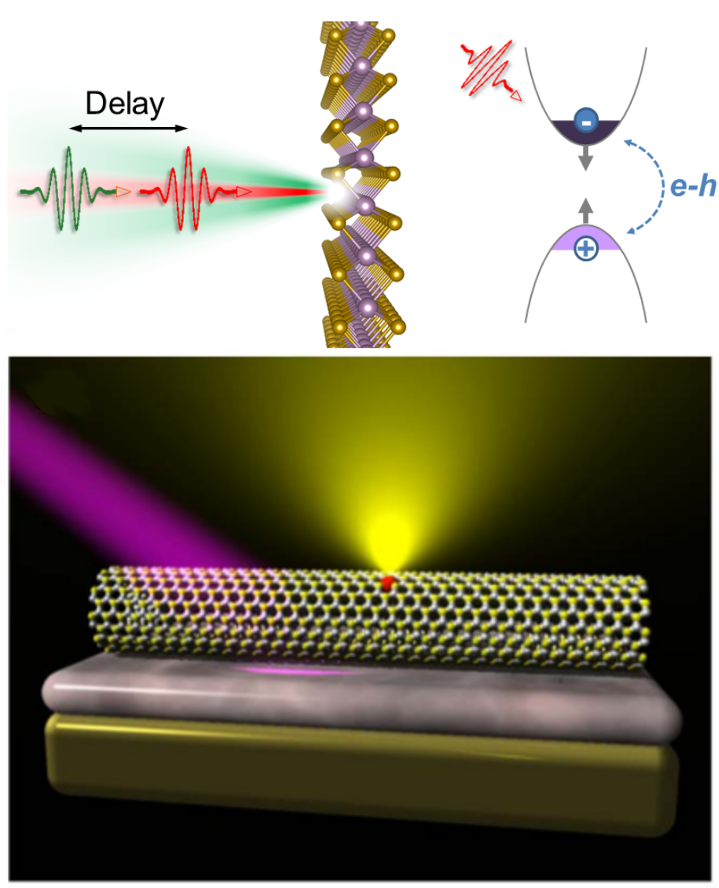Excited-state properties
Theory & Simulation Installation 3
The simulation of the excited state properties of complex and realistic systems represents a wide field at the forefront of research. Such systems include, e.g., surfaces, biomolecules, nanostructured materials, and potentially any combination of them. In this realm the present NFFA installation provides access to the most up-to-date and efficient ab-initio codes that, in a fully parameter-free way, make possible to describe a wealth of equilibrium and out-of- equilibrium properties.
Excited state properties in static conditions:
Excited state properties in metastable equilibrium conditions are crucial for the understanding of the quantum-mechanical properties of the materials. The related observables can give access to the single-particle energy levels, optical excitations and much more:
- Neutral excitations: optical absorption, energy-loss spectra;
- Charged excitations: photoemission spectra;
- Static magnetic susceptibilities;
Out-of-Equilibrium / Dynamical excited state properties:
The out-of-equilibrium dynamics describes how the system responds to external stimuli and evolves from one configuration to the other. Several dynamical processes are possible, ranging from those involving the motion of atoms and molecules (occurring on the time-scale of the picosecond) to those involving the motion of electrons, occurring on very short time- scales, ranging from femto to even atto-seconds. Both timescales can be addressed by the codes developed by, and available to, the NFFA theory installation. The offer presently includes calculation of a wealth of dynamical excited state properties such as:
- Neutral excitations: time-resolved transient absorption, reflectivity and photoluminescence;
- Charged excitations: time-resolved two-photon-photon photoemission, structural deformations, atomic motion and lattice deformation;
- Piezoelectric constants;
New features will be continuously provided by the ongoing research activities carried out within NFFA.


